Conservation with Emily:
A report from our Collection Assistant
In an effort to consolidate and reorganize our Framed Works collection, the Collections Team at the Historical Society has been assessing the condition and suitability of our frames and works within them. The process has been an exciting one. The variety of works and the method in which they were framed gives us a view into Northport, and the world around the frame, at the time it was sealed.
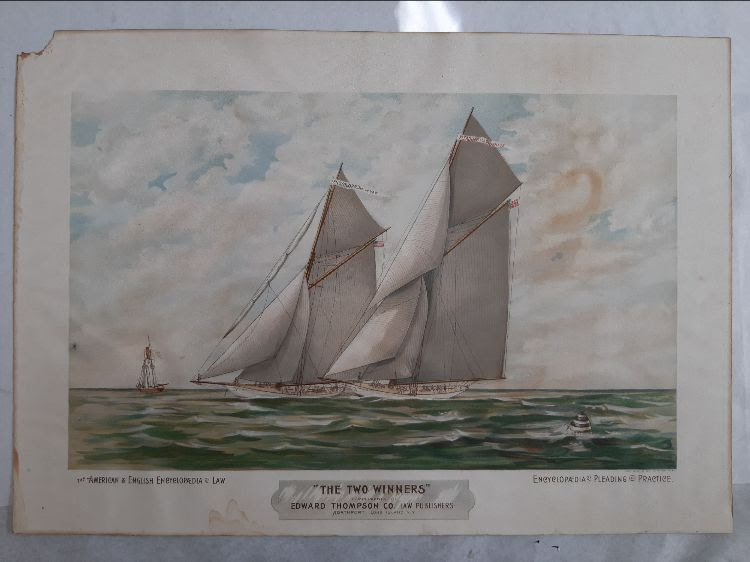
Wood plank backing has damaged an Edward Thompson Co. print "The Two Winners"
|
The process of framing art serves many purposes; mounting the work keeps it flat, matting keeps it at a safe distance from the glass, the glass protects it from damaging UV rays and combined with the frame seals out dust, insects, and other damaging agents when done properly. A framing job can also add aesthetic value to a work by accentuating color, line, or form in the image.
The frame can also be thought of as a window into the past; as the work is sealed in like a time capsule, so too are all the materials used. Materials such as mat-board, tape, backing board, nails, glue, cardboard, cardstock, even wood planks were often used to hold it all together in the early years of framing.
|
|
|
Many of the works that were removed from their frames were photographs in wooden frames that were loose at the corners, with acidic matting (sometimes without matting at all), and rusty hanging wire. It is often the backing materials and filler that cause the most damage to the works. Photos with mat-burn, or the discoloration that occurs on paper works due to the high concentration of acidic wood-pulp in the mat or backing materials, were removed from the frame and carefully unmatted to conserve the work from further damage.
|
|
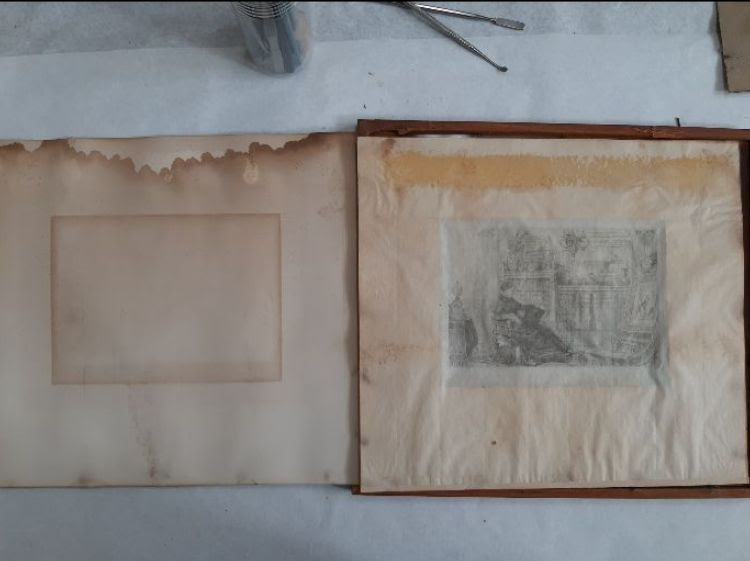
|
Many works were in store-bought frames with cardboard filler to keep the pictures from shifting too much. The backing materials for one work turned out to be blanks from the Edward Thompson Company, the law book publishers on Woodbine Avenue.
|
|
|
Often when considering the preservation of work, we have to settle for a do-least-harm situation rather than a do-no-harm one. In the case of a few technical drawings which were in their original frames, one of a “Proposed Shed” for the Northport Lumber & Coal Co. from the turn of the century and one of a property owned by Charles T. Sammis in 1909, neither had been matted when they were framed and as a result had adhered slightly to the glass. After gentle coaxing and much patience the drawings came free from the glass without damage.
|
|
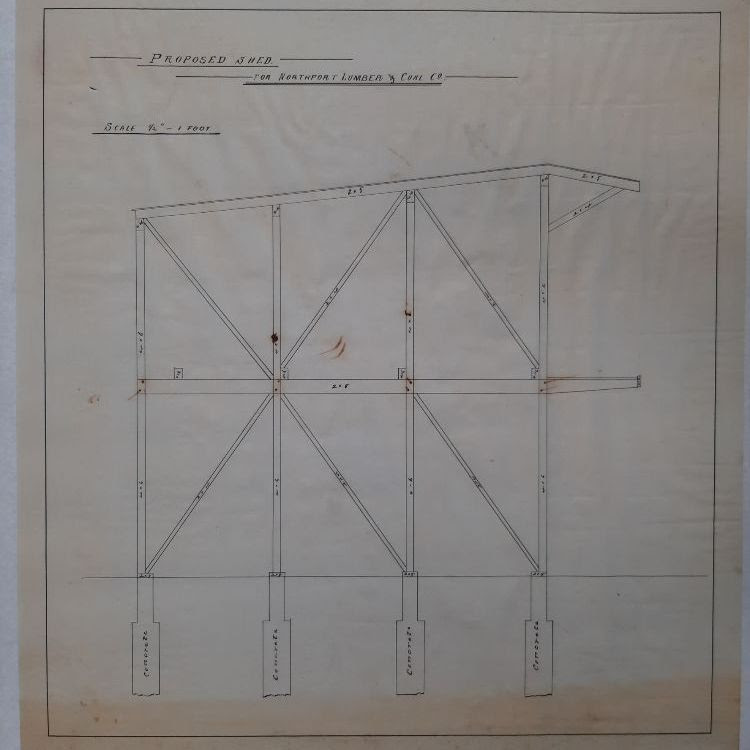
Another work which needed similar treatment was a large photographic print of a house in 1910 belonging to the Dumonts. Upon opening the backing paper, a handful of tiny dried flower petals fluttered onto the table. After removing the rest of the backing paper, at the top right-hand corner read: “Something from another time”.
The photo of the Dumont house and petals from inside the frame are seen below:
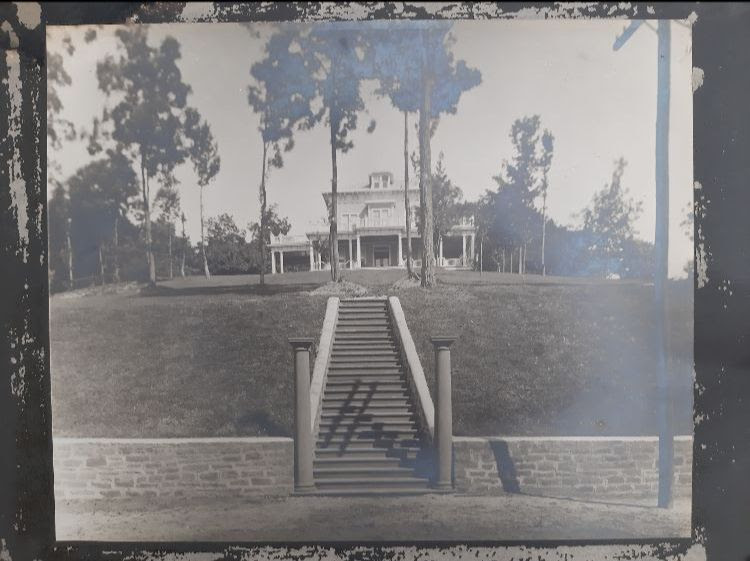

|
During the process we’ve come to find that Burt Conklin, who loved to write his name largely on the back of the frames, was an avid recycler. Not only were there signs of the frames being reused; multiple nail holes and layers of backing paper along the edges, but upon opening two of the pieces, we found genuine surprises.
|
|

The first work was a view of Northport from behind a propeller plane, but upon opening it we found a matted picture of a salon or parlor room in a beautiful Victorian house. Whether or not this is Burt Conklin’s house, requires more research. The answer may lay in two tiny portraits hanging on the wall in the room, or perhaps in a recognizable piece of furniture.

The second was at first glance, a collage of two oddities; a giant whale washed up on the beach with a crowd and policeman gathered around along with a laminated picture of Northport’s Main Street after the historic 1934 snow storm. Both pictures were placed over the mat, rather than framed by the mat.
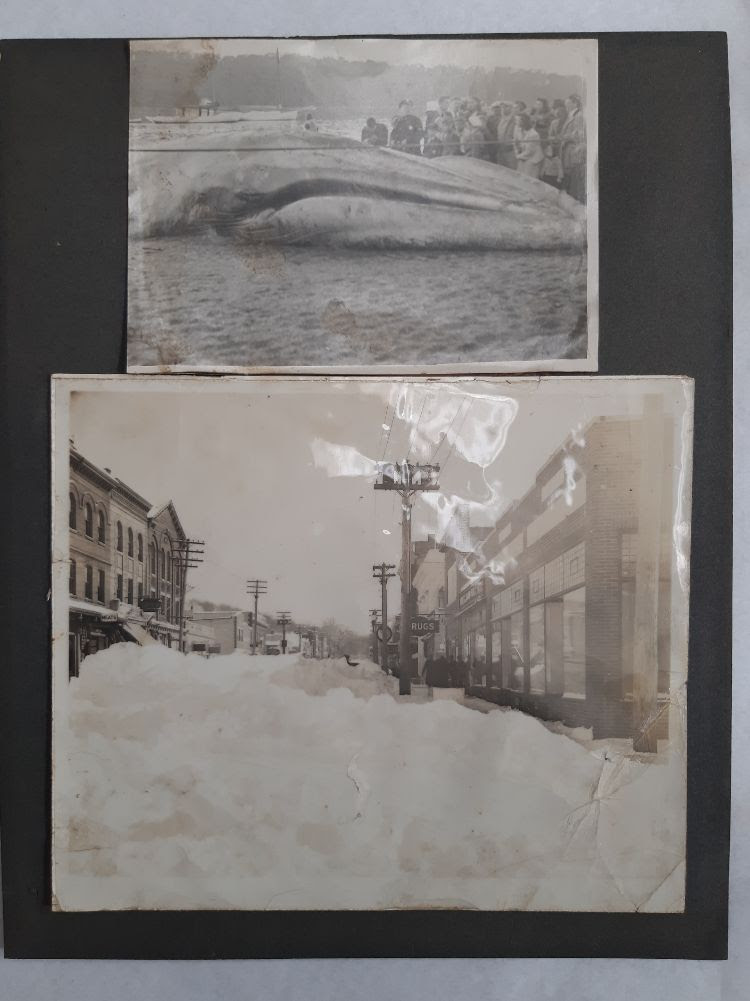
Once the frame was opened another snow storm photograph fell easily from the matting to reveal that the matting was serving its function for a much older picture. Further research has to be done to determine where in Northport or the surrounding area the snowy forest scene could have once been.

|
Taking a peek into the past by opening the back of the frame of so many works has been an adventure of discovery. In all there were around 200 framed works at the start. We have about another 50 to assess and process. There may be a few more surprises hiding in the frames of “another time.”
|
|











